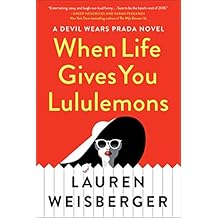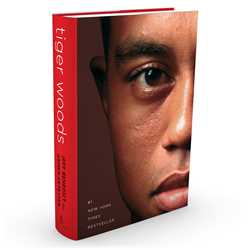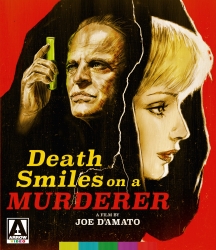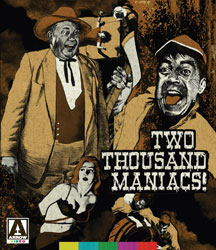Fifteen years after The Devil Wears Prada was published, Lauren Weisberger revisits one of her favorite characters from the novel—Emily Charlton, first assistant to Miranda Priestly, now a highly successful image consultant who has just landed the client of a lifetime. She’s working in Hollywood as an image consultant to the stars, but recently, Emily’s lost a few clients. She’s hopeless with social media. The new guard is nipping at her heels. She needs a big opportunity, and she needs it now. Karolina Hartwell is as A-list as they come. She’s the former face of L’Oreal. A mega-supermodel recognized the world over. And now, the gorgeous wife of the newly elected senator from New York, Graham, who also has his eye on the presidency. It’s all very Kennedy-esque, right down to the public philandering and Karolina’s arrest for a DUI—with a Suburban full of other people’s children. We can’t reveal more because we just pissed in pour pants. It’s that funny!
Karolina Hartwell is as A-list as they come. She’s the former face of L’Oreal. A mega-supermodel recognized the world over. And now, the gorgeous wife of the newly elected senator from New York, Graham, who also has his eye on the presidency. It’s all very Kennedy-esque, right down to the public philandering and Karolina’s arrest for a DUI—with a Suburban full of other people’s children. We can’t reveal more because we just pissed in pour pants. It’s that funny!
Now we know why Ronan Farrow won a Pulitzer. In War on Peace: The End of Diplomacy and the Decline of American Influence (W. W. Norton & Company, $27.95), he reveals how America is becoming a nation that shoots first and asks questions later. Or never. And while this is a new extreme, Farrow shows us it is not unprecedented. Herr Adolph Frump is putting his foot onto the throat of a diplomatic enterprise that has been weakening for decades—and history tells us that the consequences could be catastrophic. The book brings the State Department into vivid focus, as Farrow personalizes epic events and offers an account of American statecraft at once conversational and trenchant.  He provides readers with a page-turning, character-driven narrative, using the personal stories of
He provides readers with a page-turning, character-driven narrative, using the personal stories of
those whose lives were affected—and sometimes destroyed—by the decline of American diplomacy to shed light on this unsung transformation in America’s place in the world. War on Peace contains interviews with every former secretary of state alive; Farrow also unearths previously secret documents and speaks with hundreds of insiders—from whistleblowers to ambassadors to generals, spies, and warlords—to reveal how the power to make foreign policy slipped from America’s civilian diplomats and into the hands of its uniformed officers, the consequences around the world, and what might be done to change
course.
Nikola Tesla invented the radio, the induction motor, the neon lamp, and the remote control. His scientific discoveries made possible X-ray technology, wireless communications, and radar, and he predicted the Internet and even the smart watch. His image appears on stamps;Life magazine lists him as one of the one hundred most famous people of the last millennium. 
And yet, his contemporaries and fellow inventors Thomas Edison and Guglielmo Marconi achieved far greater commercial success and popular recognition. In Tesla: Inventor of the Modern [W. W. Norton & Company, $26.95 hardcover], Richard Munson asks whether Tesla’s eccentricities eclipsed his genius. Ultimately, he delivers an enthralling biography that illuminates every facet of Tesla’s life while justifying his stature as the most original inventor of the late nineteenth century.
In Giant: Elizabeth Taylor, Rock Hudson, James Dean, Edna Ferber, and the Making of a Legendary American Film (St. Martin’s Press; $27.99) Don Grahamoffers a larger-than-life narrative of the making of the classic film based on Edna Ferber’s controversial novel.  Taking a wide-angle view of America—and Texas—in the Eisenhower era, Graham reveals how the film and its production mark the rise of America as a superpower, the ascent of Hollywood celebrity, and the flowering of Texas culture as mythology. Featuring James Dean, Rock Hudson, and Elizabeth Taylor, Giant dramatizes a family saga against the background of the oil industry and its impact upon ranching culture—think Spindletop Hill in Beaumont, Texas, and the fabled King Ranch in South Texas. Almost as good as the film.
Taking a wide-angle view of America—and Texas—in the Eisenhower era, Graham reveals how the film and its production mark the rise of America as a superpower, the ascent of Hollywood celebrity, and the flowering of Texas culture as mythology. Featuring James Dean, Rock Hudson, and Elizabeth Taylor, Giant dramatizes a family saga against the background of the oil industry and its impact upon ranching culture—think Spindletop Hill in Beaumont, Texas, and the fabled King Ranch in South Texas. Almost as good as the film.
In Inseparable: The Original Siamese Twins and Their Rendezvous with American History (Liveright, $28.95) Yunte Huang recounts the peculiar, and often ironic, rise of Chang and Eng from sideshow curiosity to Southern gentry—an unlikely story that exposes the foibles of a young republic eager to tyrannize and delight in the abnormal. Famous for their quick wit (they once refunded a one-eyed man half his ticket because he “couldn’t see as much as the others”), Chang and Eng became a nationwide sensation, heralded as living symbols of the humbugged freak. Their unrivaled success quickened the birth of mass entertainment in America, leading to the minstrel show and the rise of showmen like P.T. Barnum.
 And it is here that we encounter a twist. Miraculously, despite the 1790 Naturalization Act which limited citizenship to “free white persons” (until 1952), Chang and Eng became American citizens under the Superior Court of North Carolina. They then went on to marry two white sisters—Sarah and Adelaide Yates—and father 23 children despite the interracial marriage ban (in place until 1967). They owned 18 slaves and became staunch advocates for the Confederacy, so much so that their sons fought for the South during the Civil War. Huang reveals that it was perhaps their very “otherness” that worked for them: they were neither one individual, or quite two.
And it is here that we encounter a twist. Miraculously, despite the 1790 Naturalization Act which limited citizenship to “free white persons” (until 1952), Chang and Eng became American citizens under the Superior Court of North Carolina. They then went on to marry two white sisters—Sarah and Adelaide Yates—and father 23 children despite the interracial marriage ban (in place until 1967). They owned 18 slaves and became staunch advocates for the Confederacy, so much so that their sons fought for the South during the Civil War. Huang reveals that it was perhaps their very “otherness” that worked for them: they were neither one individual, or quite two.
Forty-five years after Bruce Lee’s sudden death at 32, Matthew Polly has written the definitive account of Lee’s life. Following a decade of research, dozens of rarely seen photographs, and more than one hundred interviews with Lee’s family and friends, Bruce Lee: A Life (Simon & Schuster, $35) breaks down the myths surrounding Bruce Lee and delivers a complex, humane portrait of the icon.
 The book explores Lee’s early years: his career as a child star in Hong Kong cinema; his actor father’s struggles with opium addiction; his troublemaking teen years; and his beginnings as a martial arts instructor. Polly chronicles the trajectory of Lee’s acting career in Hollywood, from his frustration seeing role after role he auditioned for go to a white actors in eye makeup, to his eventual triumph as a leading man, to his challenges juggling a sky-rocketing career with his duties as a father and husband. Polly also sheds light on Bruce Lee’s shocking end—which is to this day is still shrouded in mystery—by offering an alternative theory behind his tragic demise.
The book explores Lee’s early years: his career as a child star in Hong Kong cinema; his actor father’s struggles with opium addiction; his troublemaking teen years; and his beginnings as a martial arts instructor. Polly chronicles the trajectory of Lee’s acting career in Hollywood, from his frustration seeing role after role he auditioned for go to a white actors in eye makeup, to his eventual triumph as a leading man, to his challenges juggling a sky-rocketing career with his duties as a father and husband. Polly also sheds light on Bruce Lee’s shocking end—which is to this day is still shrouded in mystery—by offering an alternative theory behind his tragic demise.
When Henry Alford first wrote about his experience with a Zumba class, little did he realize that it was the start of something much bigger. Dance would grow and take on many roles for Henry: exercise, confidence builder, an excuse to travel, a source of ongoing wonder and—when he dances with Alzheimer’s patients—even a kind of community service.  Tackling a wide range of forms with gusto (including ballet, hip-hop, jazz, ballroom, tap, contact improvisation, swing), And Then We Danced: A Voyage into the Groove (Simon & Schuster, $26) takes us through the works and careers of luminaries ranging from Bob Fosse to George Balanchine, Twyla Tharp to Arthur Murray, Isadora Duncan to Savion Glover. Equal parts memoir and cultural history, this laugh-out-loud book will inform, entertain and leave readers tapping their toes.
Tackling a wide range of forms with gusto (including ballet, hip-hop, jazz, ballroom, tap, contact improvisation, swing), And Then We Danced: A Voyage into the Groove (Simon & Schuster, $26) takes us through the works and careers of luminaries ranging from Bob Fosse to George Balanchine, Twyla Tharp to Arthur Murray, Isadora Duncan to Savion Glover. Equal parts memoir and cultural history, this laugh-out-loud book will inform, entertain and leave readers tapping their toes.

 All of the recipes are simple yet filling and are designed to keep hunger at bay and your energy high. Each takes no more than thirty minutes to prepare and requires no more than ten ingredients. Some of the highlights include:
All of the recipes are simple yet filling and are designed to keep hunger at bay and your energy high. Each takes no more than thirty minutes to prepare and requires no more than ten ingredients. Some of the highlights include: Set over the course of three days, The President Is Missing sheds a stunning light upon the inner workings and vulnerabilities of our nation. Filled with information that only a former Commander-in-Chief could know, this is the most authentic, terrifying novel to come along in many years. And a timely, historic story that will be read-and talked about-for years to come.
Set over the course of three days, The President Is Missing sheds a stunning light upon the inner workings and vulnerabilities of our nation. Filled with information that only a former Commander-in-Chief could know, this is the most authentic, terrifying novel to come along in many years. And a timely, historic story that will be read-and talked about-for years to come. The book is behind-the-scenes account of a president who always strove to do what he saw as the right thing, while often disregarding the political repercussions.
The book is behind-the-scenes account of a president who always strove to do what he saw as the right thing, while often disregarding the political repercussions.![The Battle for Beverly Hills: A City's Independence and the Birth of Celebrity Politics by [Clare, Nancie]](https://images-na.ssl-images-amazon.com/images/I/51TSEE6YNLL.jpg) For them, Beverly Hills was a refuge from Los Angeles and its relentless press. Instead of the larger, institutionally corrupt police force, Beverly Hills had a smaller, separate constabulary that was less likely to work hand in glove with the studios and more willing to look the other way at violations of the Prohibition Act. In The Battle for Beverly Hills (St. Martin’s Press, $27.99) Nancie Clare reveals how the stars battled to keep their city free from the clutches of a rapacious Los Angeles and lay the groundwork for celebrity influence and political power. With a nuanced eye and fantastic storytelling, Clare weaves an irresistible tale of glamour, fame, gossip, and politics.
For them, Beverly Hills was a refuge from Los Angeles and its relentless press. Instead of the larger, institutionally corrupt police force, Beverly Hills had a smaller, separate constabulary that was less likely to work hand in glove with the studios and more willing to look the other way at violations of the Prohibition Act. In The Battle for Beverly Hills (St. Martin’s Press, $27.99) Nancie Clare reveals how the stars battled to keep their city free from the clutches of a rapacious Los Angeles and lay the groundwork for celebrity influence and political power. With a nuanced eye and fantastic storytelling, Clare weaves an irresistible tale of glamour, fame, gossip, and politics. He tells the stories behind the stories—riveting in their own right—as he chases leads, cultivates sources, and grapples with the weight of what he uncovers, daring to challenge official narratives handed down from the powers that be. In telling these stories, Hersh divulges previously unreported information about some of his biggest scoops, including the My Lai massacre and the horrors at Abu Ghraib. There are also illuminating recollections of some of the giants of American politics and journalism: Ben Bradlee, A. M. Rosenthal, David Remnick, and Henry Kissinger among them. This is essential reading on the power of the printed word at a time when good journalism is under fire as never before.
He tells the stories behind the stories—riveting in their own right—as he chases leads, cultivates sources, and grapples with the weight of what he uncovers, daring to challenge official narratives handed down from the powers that be. In telling these stories, Hersh divulges previously unreported information about some of his biggest scoops, including the My Lai massacre and the horrors at Abu Ghraib. There are also illuminating recollections of some of the giants of American politics and journalism: Ben Bradlee, A. M. Rosenthal, David Remnick, and Henry Kissinger among them. This is essential reading on the power of the printed word at a time when good journalism is under fire as never before. Adventures of a Young Naturalist–The Zoo Quest Expeditions (Quercus, $26.99) is the story of those voyages. Staying with local tribes while trekking in search of giant anteaters in Guyana, Komodo dragons in Indonesia, and armadillos in Paraguay, he and the rest of the team contended with cannibal fish, aggressive tree porcupines, and escape-artist wild pigs, as well as treacherous terrain and unpredictable weather, to record the incredible beauty and biodiversity of these regions. Don’t take our word for it: Says Barack Obama of Attenborough: “A great educator as well as a great naturalist.”
Adventures of a Young Naturalist–The Zoo Quest Expeditions (Quercus, $26.99) is the story of those voyages. Staying with local tribes while trekking in search of giant anteaters in Guyana, Komodo dragons in Indonesia, and armadillos in Paraguay, he and the rest of the team contended with cannibal fish, aggressive tree porcupines, and escape-artist wild pigs, as well as treacherous terrain and unpredictable weather, to record the incredible beauty and biodiversity of these regions. Don’t take our word for it: Says Barack Obama of Attenborough: “A great educator as well as a great naturalist.” Former federal prosecutor Lis Wiehl’s Hunting Charles Manson (Thomas Nelson, $26.99) is a historical thriller of the crimes and manhunt; in the process, she reveals how the social and political context that gave rise to Manson is eerily similar to our own.
Former federal prosecutor Lis Wiehl’s Hunting Charles Manson (Thomas Nelson, $26.99) is a historical thriller of the crimes and manhunt; in the process, she reveals how the social and political context that gave rise to Manson is eerily similar to our own.![Richard III: England's Most Controversial King by [Skidmore, Chris]](https://images-na.ssl-images-amazon.com/images/I/51kkyj5fX6L.jpg) In Richard III: England’s Most Controversial King (St. Martin’s Press, $29.99) acclaimed historian Chris Skidmore has written the authoritative biography of a man alternately praised as a saint and cursed as a villain. Was he really a power-crazed monster who killed his nephews, or the victim of the first political smear campaign conducted by the Tudors?
In Richard III: England’s Most Controversial King (St. Martin’s Press, $29.99) acclaimed historian Chris Skidmore has written the authoritative biography of a man alternately praised as a saint and cursed as a villain. Was he really a power-crazed monster who killed his nephews, or the victim of the first political smear campaign conducted by the Tudors? Winner of 14 major golf championships and 79 PGA Tour events, Woods was the first billion-dollar athlete, earning more than $100 million a year in endorsements. But it was all a carefully crafted illusion. As it turned out, Woods had been living a double life for years—one that exploded in the aftermath of a Thanksgiving night crash that exposed his serial infidelity and sent his personal and professional life off a cliff. Tiger Woods (Simon & Schuster, $30) is based on three years of extensive research, and drawing on more than 400 interviews with people from every corner of Woods’s life.
Winner of 14 major golf championships and 79 PGA Tour events, Woods was the first billion-dollar athlete, earning more than $100 million a year in endorsements. But it was all a carefully crafted illusion. As it turned out, Woods had been living a double life for years—one that exploded in the aftermath of a Thanksgiving night crash that exposed his serial infidelity and sent his personal and professional life off a cliff. Tiger Woods (Simon & Schuster, $30) is based on three years of extensive research, and drawing on more than 400 interviews with people from every corner of Woods’s life. Bereft with grief, Franz reanimates his dead sister using a formula engraved on an ancient Incan medallion. Greta then returns as an undead avenging angel, reaping revenge on the Ravensbrück family and her manically possessive brother. Presented here in a stunning 2K restoration, D’Amato’s film is a stately and surreal supernatural mystery which benefits from an achingly mournful score by Berto Pisano, several shocking scenes of gore, and a typically sinister performance from Klaus Kinski as a morbid doctor. Bonuses include D’Amato Smiles on Death, an archival interview in which the director discusses the film; All About Ewa, a newly-filmed, career-spanning interview with the Swedish star; Smiling on the Taboo: Sex, Death and Transgression in the horror films of Joe D’Amato, a new video essay by critic Kat Ellinger and original trailers.
Bereft with grief, Franz reanimates his dead sister using a formula engraved on an ancient Incan medallion. Greta then returns as an undead avenging angel, reaping revenge on the Ravensbrück family and her manically possessive brother. Presented here in a stunning 2K restoration, D’Amato’s film is a stately and surreal supernatural mystery which benefits from an achingly mournful score by Berto Pisano, several shocking scenes of gore, and a typically sinister performance from Klaus Kinski as a morbid doctor. Bonuses include D’Amato Smiles on Death, an archival interview in which the director discusses the film; All About Ewa, a newly-filmed, career-spanning interview with the Swedish star; Smiling on the Taboo: Sex, Death and Transgression in the horror films of Joe D’Amato, a new video essay by critic Kat Ellinger and original trailers. When a group of Yankee tourists take a detour and wind up in the small Southern town of Pleasant Valley—which has magically rematerialized 100 years after its destruction during the Civil War—they find themselves welcomed by the eager townsfolk as guests of honor at their centennial celebrations. Little do the Northerners know that the festivities are set to include torture, death and dismemberment. Also including H.G. Lewis’ fist fightin’, hooch-swillin’ epic Moonshine Mountain as a bonus feature, this is one double-dose of hicksploitation truly worthy of an almighty “Yeehah!” Bonuses include Herschell’s Art of Advertising in which H.G. Lewis shares his expert opinion on the art of selling movies; Two Thousand Maniacs Can’t be Wrong, in which filmmaker Tim Sullivan on H.G. Lewis’ gore classic and Hickspoitation: Confidential, a visual essay on the depiction of the American South in exploitation cinema.
When a group of Yankee tourists take a detour and wind up in the small Southern town of Pleasant Valley—which has magically rematerialized 100 years after its destruction during the Civil War—they find themselves welcomed by the eager townsfolk as guests of honor at their centennial celebrations. Little do the Northerners know that the festivities are set to include torture, death and dismemberment. Also including H.G. Lewis’ fist fightin’, hooch-swillin’ epic Moonshine Mountain as a bonus feature, this is one double-dose of hicksploitation truly worthy of an almighty “Yeehah!” Bonuses include Herschell’s Art of Advertising in which H.G. Lewis shares his expert opinion on the art of selling movies; Two Thousand Maniacs Can’t be Wrong, in which filmmaker Tim Sullivan on H.G. Lewis’ gore classic and Hickspoitation: Confidential, a visual essay on the depiction of the American South in exploitation cinema. Lake of Dracula begins with a young girl suffering a terrifying nightmare of a vampire with blazing golden eyes. Eighteen years later, the dream is revealed to be a hellish prophecy when a strange package containing an empty coffin mysteriously turns up at a nearby lake. In Evil of Dracula, a professor takes up a new post at an all-girls school only to discover the school’s principle conceals a dark secret and the pupils are in grave danger. Abounding with images of dark thunderous nights, ghostly mansions and bloody fangs, Michio Yamamoto’s trilogy emphasizes atmosphere and style and is sure to please both fans of classic gothic horror and Japanese genre cinema. Bonuses include newly translated English subtitles; Kim Newman on The Bloodthirsty Trilogy, a new video appraisal by the critic and writer; and reversible sleeve featuring original and newly commissioned artwork by Matt Griffin.
Lake of Dracula begins with a young girl suffering a terrifying nightmare of a vampire with blazing golden eyes. Eighteen years later, the dream is revealed to be a hellish prophecy when a strange package containing an empty coffin mysteriously turns up at a nearby lake. In Evil of Dracula, a professor takes up a new post at an all-girls school only to discover the school’s principle conceals a dark secret and the pupils are in grave danger. Abounding with images of dark thunderous nights, ghostly mansions and bloody fangs, Michio Yamamoto’s trilogy emphasizes atmosphere and style and is sure to please both fans of classic gothic horror and Japanese genre cinema. Bonuses include newly translated English subtitles; Kim Newman on The Bloodthirsty Trilogy, a new video appraisal by the critic and writer; and reversible sleeve featuring original and newly commissioned artwork by Matt Griffin.